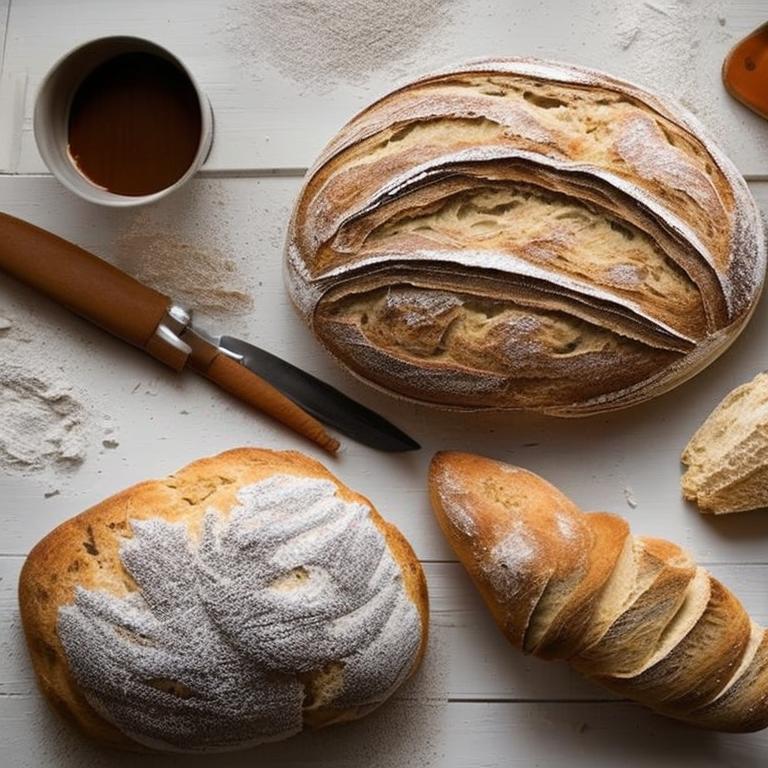Mastering the Techniques of Sourdough Bread Making
Mastering the art of sourdough bread making requires patience, practice, and a deep understanding of the fermentation process. The key to successful sourdough bread lies in creating and maintaining a healthy sourdough starter, which is a mixture of flour and water that captures wild yeast from the environment. To begin the sourdough bread making process, one must first create a sourdough starter by mixing equal parts of flour and water and allowing it to ferment at room temperature. As the mixture ferments, wild yeast from the air and lactobacilli bacteria present in the flour begin to colonize the starter, creating a lively culture that will leaven the bread. Once the sourdough starter is active and bubbly, it is ready to be used in bread making. Mixing the starter with flour, water, and salt forms the dough, which is then kneaded and shaped before undergoing a series of fermentation and proofing stages. The slow fermentation process allows the flavors to develop and the gluten to strengthen, resulting in a well-structured loaf with a complex taste profile. One of the key techniques in sourdough bread making is the process of folding the dough during fermentation. Folding helps to strengthen the gluten network, improve the dough's structure, and redistribute the yeast and bacteria throughout the dough. By incorporating regular folds into the fermentation process, bakers can achieve a better rise and texture in their sourdough bread. Another important aspect of mastering sourdough bread making is understanding the role of temperature and hydration in the fermentation process. Controlling the temperature of the dough during fermentation can influence the rate of fermentation and the development of flavors. Additionally, adjusting the hydration level of the dough can impact the texture and crumb structure of the final loaf. By honing these techniques and experimenting with different variables, bakers can elevate their sourdough bread making skills and create artisanal loaves that are both delicious and visually appealing. Mastering the techniques of sourdough bread making is a rewarding journey that allows bakers to express their creativity and passion for the craft of baking.
Exploring Unique Sourdough Bread Recipes
Exploring unique sourdough bread recipes opens up a world of creative possibilities for bakers looking to experiment with flavors, textures, and ingredients. While traditional sourdough bread is a classic favorite, there are countless variations and adaptations that can be made to customize the loaf to suit individual preferences. One popular variation of sourdough bread is adding different types of grains and seeds to the dough. Grains like rye, spelt, or whole wheat can be incorporated to enhance the flavor and nutritional profile of the bread. Seeds such as sunflower, pumpkin, or sesame seeds can add a crunchy texture and nutty taste to the loaf. For those with a sweet tooth, sweet sourdough bread recipes are a delightful treat. Adding ingredients like honey, dried fruits, or spices like cinnamon and nutmeg can transform a basic sourdough loaf into a decadent dessert bread. Sweet sourdough breads are perfect for breakfast or as a special indulgence during tea time. Savory sourdough bread recipes offer a savory twist on the traditional loaf, incorporating ingredients like cheese, herbs, olives, or roasted garlic. These savory additions can elevate the flavor profile of the bread and make it a versatile accompaniment to soups, salads, or charcuterie boards. Savory sourdough breads are a great option for those looking to explore new flavor combinations. Experimenting with different shaping techniques is another way to create unique sourdough bread recipes. From braided loaves to decorative scoring patterns, the possibilities for shaping sourdough bread are endless. Shaping the dough creatively not only enhances the visual appeal of the loaf but also influences its texture and crust development. By exploring and experimenting with unique sourdough bread recipes, bakers can unleash their creativity and showcase their personal style in their baking. Whether it's adding unexpected ingredients, trying new flavor combinations, or mastering intricate shaping techniques, the world of sourdough bread offers endless opportunities for culinary exploration and innovation.
